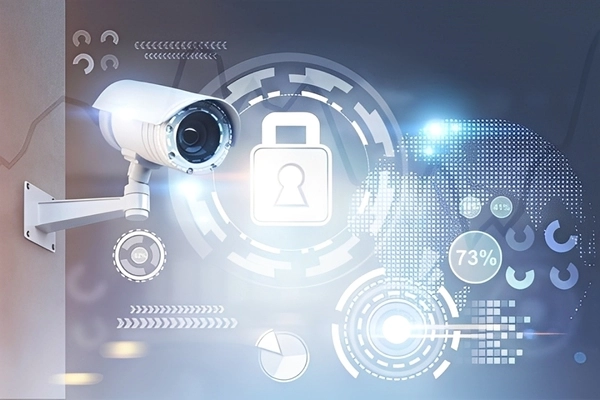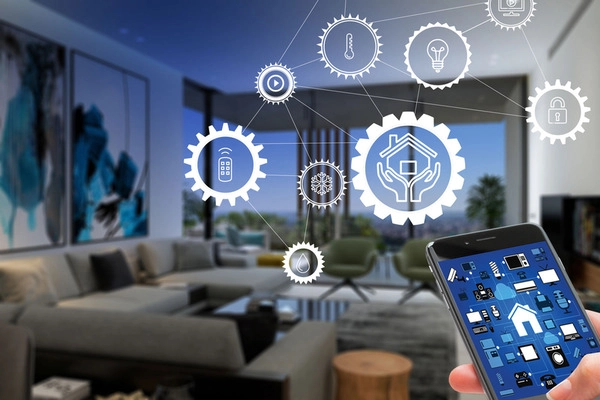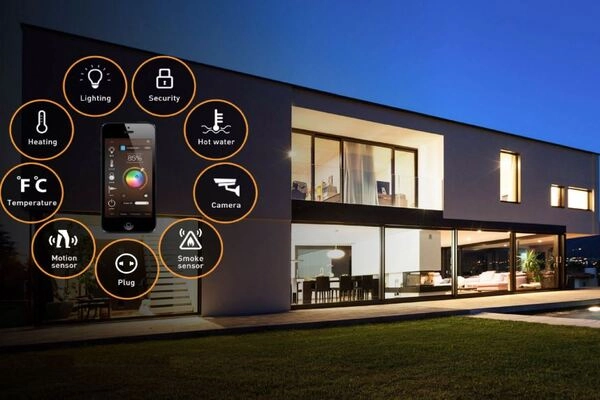In the era of Industry 4.0, the application of IoT for building management has become an inevitable trend to enhance operational efficiency, save energy, and improve the resident experience. IoT (Internet of Things) enables the connection of devices, sensors, and systems within a building to collect data, allowing for smarter, faster, and more accurate decision-making. This article provides a detailed overview of IoT for building management, its benefits, practical applications, and future prospects.
What is IoT for building management?
IoT for building management involves the use of internet-connected devices, smart sensors, and data analytics systems to monitor, manage, and optimize building operations. This technology not only helps control electrical, water, and security systems but also supports resident services and improves overall operational efficiency.

By collecting data from smart devices, building management can detect issues early, optimize energy costs, improve the quality of the living environment, and enhance the user experience. In the following section, we will explore in detail the key benefits of applying IoT in smart building management.
Benefits of IoT in smart building management
Implementing IoT for building management offers significant advantages, helping buildings operate more efficiently, reduce costs, and increase resident satisfaction.

- Energy and operational cost savings: IoT systems can monitor electricity, water, and HVAC consumption, automatically adjusting operations to reduce waste.
- Enhanced security: IoT helps monitor critical areas, detect unusual situations, and send timely alerts.
- Improved resident experience: Automated services such as facility booking, smart parking management, and intelligent lighting systems make life more convenient and secure for residents.
- Efficient operation and maintenance management: Data collected from devices allows for early fault detection and maintenance planning before issues occur, preventing service interruptions.
These benefits are realized through specific applications, which we will explore in the next section.
Applications of IoT for building management
IoT applications in building management are diverse, ranging from security monitoring, energy savings, and environmental management to resident support, operational optimization, and equipment maintenance. Below are some prominent applications:
Monitoring and ensuring building security
Security is a crucial factor in every building. IoT systems can connect cameras, motion sensors, door sensors, and fire alarm systems for continuous monitoring. In the event of any unusual situation, the system instantly alerts building management. Additionally, IoT supports facial recognition and automated access control, enhancing security while reducing manpower requirements.

Efficient energy management and savings
One of the most important applications of IoT for building management is energy management. Sensors measuring electricity, water, and cooling consumption can analyze real-time data to optimize the operation of lighting systems, air conditioning, water pumps, and elevators. For example, lights automatically turn off when no one is present, and air conditioning adjusts the temperature based on room occupancy, significantly reducing energy costs.
Water, waste, and environmental management
IoT also supports the management of environmental factors within buildings. Sensors can monitor air quality, water usage, drainage systems, and waste levels. This data allows building management to make timely decisions, ensuring a clean, safe, and sustainable living environment. Additionally, early warning systems for issues such as water leaks, blockages, or air pollution are another major benefit of IoT.
Resident support and condominium management
Beyond operational applications, IoT for building management also enhances the resident experience. Smart systems assist with booking facilities, managing parking spaces, sending service notifications, or even controlling electrical devices in apartments remotely via smartphones. This not only provides convenience but also increases resident satisfaction and safety.

Optimizing operations, maintenance, and equipment management
IoT devices provide real-time data on the operational status of building systems. Building management can use this information to plan predictive maintenance, preventing sudden equipment failures, reducing repair costs, and extending the lifespan of devices. Automating maintenance and operational processes also allows staff to focus on other important tasks, improving overall management efficiency.
The future of IoT in smart building management
The future of IoT for building management promises significant advancements. As AI, Big Data, and 5G technologies are deeply integrated into IoT systems, buildings will become smarter, capable of self-learning, predicting resident needs, and automatically optimizing operations with minimal human intervention.

Moreover, the trend of green and environmentally friendly buildings will be further promoted through IoT, as energy, water, and air quality monitoring systems are optimized for sustainability. Applications that combine IoT and AI also open the possibility of developing “super smart” buildings, where all activities—from security, energy, and resident services to maintenance—are managed automatically, intelligently, and efficiently.
With the rapid advancement of technology, IoT for building management is not just a trend but is set to become a standard in modern buildings, helping to optimize costs, enhance resident experiences, and contribute to sustainable smart cities.
The application of IoT in building management is ushering in a new era for smart buildings. From optimizing energy use, enhancing security, improving living environments, to supporting residents, IoT enables more efficient and sustainable building operations. As technology continues to evolve, the future of building management will become increasingly intelligent, convenient, and environmentally friendly.
